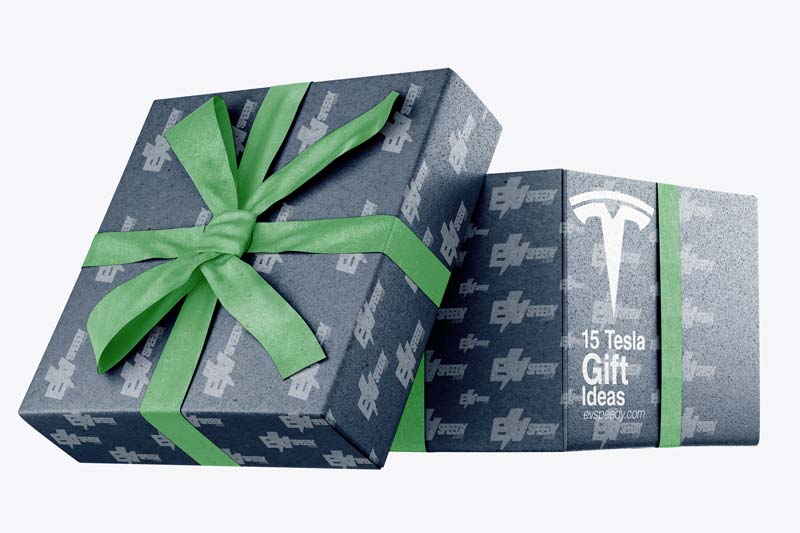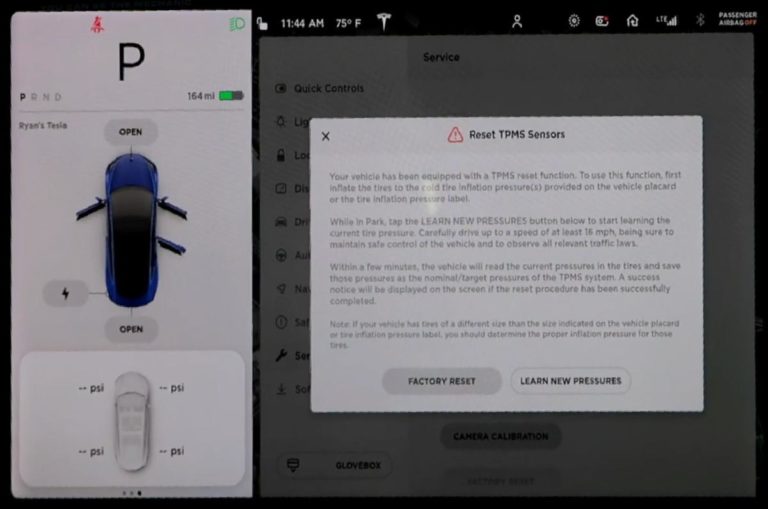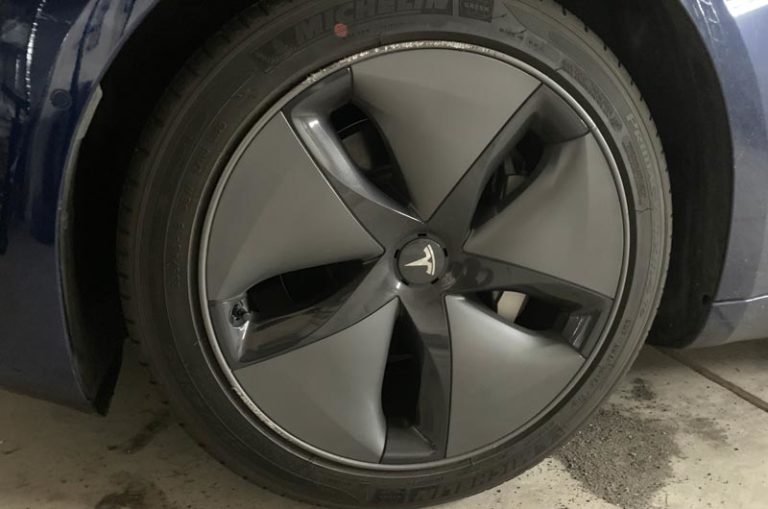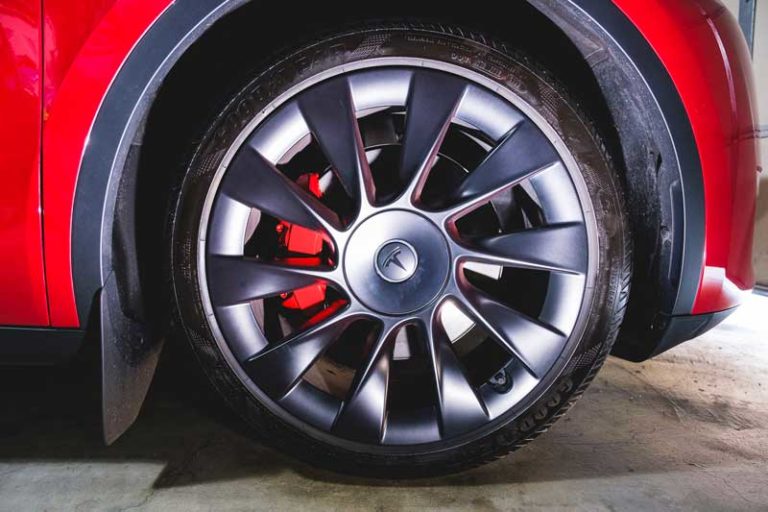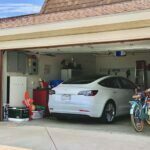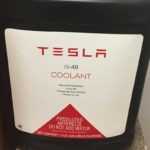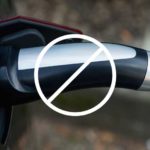It is that time when you have to look for replacement tires for your Tesla Model 3. The standard Hankook tires have worn out after about 30 000 miles, and now you have to find the best replacement tires.
You don’t have to stress because I have done the research for you. The best Tesla Model 3 replacement tires can be found in the chart below.
| Best for | Tire |
| Best Overall | Good Year Assurance Maxlife |
| Best Range | Michelin Cross Climate 2s |
| Best Value | Michelin Pilot Sport AS-4s |
| Best Track Performance | Continental Extreme Contact DWS06s |
| Best Touring | Michelin Tour Primacy A/S |
- Best Overall: Good Year Assurance Maxlife
- Best Range: Michelin Cross Climate 2s
- Best Value: Michelin Pilot Sport AS-4s
- Best Track Performance: Continental Extreme Contact DWS06s
- Best Touring: Michelin Primacy Tour A/S
- Did You Know?
- Where To Get Replacement Tires for the Model 3
- Factors To Consider When Buying Tires for Tesla Model 3
- Ideal PSI for Tesla Model 3 Tires
- The Model 3 Is a Sales Hit
- Does The Model 3 Have a Spare Tire?
- How Do I Know When To Change My Tesla's Tires?
- The Importance of Tire Maintenance for Tesla Model 3
- How Does Tire Weight Affect The Performance of a Tesla?
- Does Tesla Use Run Flat Tires?
- Does Costco Repair Tesla Tires?
- Frequently Asked Questions
It’s important to note that Tesla does not produce its own tires. They use tires from other brands that are created to work great on Tesla vehicles.
This means that when you’re looking for a replacement tire, you don’t necessarily need to get the exact tire that your Tesla came with. You can replace them with a range of different tires.
Since each driver has different needs, a head to head comparison isn’t really possible. But the options below should be suitable for most driver needs.
Best Overall: Good Year Assurance Maxlife
Good Year’s Assurance Maxlife is the best all-season replacement tire for your Model 3. It is designed specifically to stand up to the everyday wear and tear that comes with driving your electric vehicle. Its advanced tread design provides excellent traction and handling in all weather conditions.
Tesla Model 3 owners have used these tires in the snow, and they do great. The well-designed tread provides good traction without feeling too slippery. And when fall arrives, they offer good performance on dry roads, making them the perfect choice all year round.

Their only downside is that they are a bit more expensive than other options, but in my opinion, the extra cost is worth it for the peace of mind and superior performance you get for these great tires.
You can also squeeze more life out of your Maxlife tires by rotating them regularly and making sure you keep the pressure at the recommended level.
Overall, if you’re looking for an all-season replacement tire that will handle everything from rain to sleet and even snow conditions, the Good Year Assurance Maxlife is the best tire for you.
Best Range: Michelin Cross Climate 2s
Michelin’s Cross Climate 2s is one of the few Model 3 replacement options that will not take a slash out of your range. They have a unique tread design that helps to reduce road noise, and their low rolling resistance enables you to go further on a single charge.
Here’s the thing: the stock tires (Michelin Primary MXM4) offer the best range, but at the expense of grip and handling. That means they may not be the best tire to get as a replacement.
And since most drivers want a good tire in both wet and dry conditions, Michelin’s CrossClimate 2s are the perfect alternative. It offers better control while driving, braking and steering. Plus, you can go further on each charge with low rolling resistance without sacrificing performance.
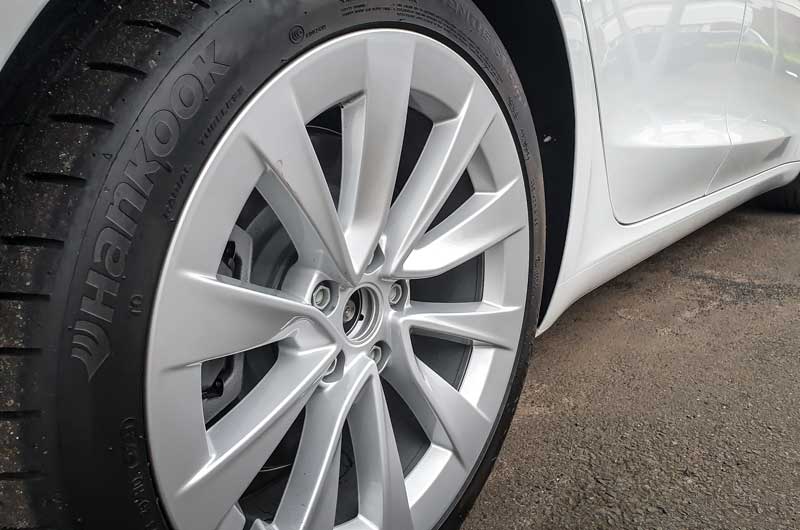
You’ll have to sacrifice 5% to 10% of your range, but that’s not a lot. And if you focus on performance instead of long range, you are likely to get value for money.
Overall, if you’re looking for a tire that is good in both wet and dry conditions while still offering improved fuel economy and reduced noise levels, get the Michelin Cross Climate 2s.
Best Value: Michelin Pilot Sport AS-4s
If you’re looking for a replacement tire with superior performance and good value for your Model 3, consider getting the Michelin’s Pilot Sport AS-4s. They provide excellent handling in wet and dry conditions without sacrificing comfort or ride quality.
I also like that they are available in various sizes to fit all Model 3 rim sizes. so you can use them on different wheels. On top of that, their aggressive tread pattern provides excellent traction and grip in all weather conditions.

You can expect to get around 20,000 miles (32,187 km) out of them before they need to be replaced. And if you take care of them, you can even get up to 30,000 miles (48,280 km).
My Tesla buddy has a set of these tires on his Model 3 and swears by them. And after driving on them myself, I can see why. You get a smooth, comfortable ride without sacrificing performance, and the price point is pretty reasonable.
Overall, Michelin’s Pilot Sport AS-4s is a great choice if you want superior handling and grip in wet and dry conditions while getting excellent value for your money.
Anyway, on a similar note, I wrote a somewhat related article comparing Tesla Aero Wheels with Tesla Sport Wheels. The results turned out to be interesting. Check it out!
Best Track Performance: Continental Extreme Contact DWS06s
If you’re looking for the best track performance in your Model 3, Continental’s Extreme Contact DWS06s are a great choice. They offer superior handling and grip, even when the road is slick or wet. They are great for spirited driving or light off-roading.
You’ll feel like driving is a sport with these!
However, there are two downsides to these tires. First, they are a bit noisy on the highway. Second, you will sacrifice some of your long range on these bad boys.
These tires perform flawlessly on both the track and the street. This Continental tire is perfect if you’re looking for a tire that can handle everything from the daily commute to the occasional track day.
Best Touring: Michelin Primacy Tour A/S
The Michelin’s Primacy Tour A/S is an excellent choice for a replacement tire for your Model 3 that offers superior handling and comfort.
These tires have an asymmetric tread pattern that provides excellent handling and grip in wet and dry conditions. They also have a unique Comfort Control Technology that helps reduce road noise, making them perfect for long drives in your Model 3. Combine that with their low rolling resistance, and you’ll get a better range without sacrificing performance.
Did You Know?
The two rollers on the Model 3’s steering wheel are more than a fun aesthetic feature. They can control your mirrors, steering wheel position, and even turn up the volume on your radio! This is something that even luxury car makers haven’t thought of doing.
Where To Get Replacement Tires for the Model 3
If you’re looking to get any of these replacement tires for your Model 3, you can easily find them online. One great option is Discount Tire Direct, which offers a wide selection of tires for your Tesla at affordable prices.
Other options include Amazon, Tire Rack, or your local tire shop. Depending on where you live and your budget, you can easily find replacement tires for your Model 3. Just do your research beforehand to make sure they are the right size that they’ll fit your setup.
Here’s how you can make sense of the tire dimensions:
Let’s say you have 18-inch (45.72cm) wheels on your Tesla. The dimensions you need are P235/ 45/ R18 98W. Now let me break down this code for you:
- P = Passenger car.
- 235 = The width of the tire in millimeters (sidewall to sidewall).
- 45 = The aspect ratio, which is measured as height: width.
- R = This refers to radial construction, one of the 2 main types of tire construction.
- 18 = The rim diameter in inches.
- 98W = The load index and speed rating. The higher the load capacity, the more weight a tire can carry safely. The higher the speed rating, the faster you can go on your Model 3. In this case, W is for speeds of up to 168 mph (270.37 kph).
This information can be found on the sidewall of your current tires. Just look for the letters P, T, or LT (which stands for a light truck), followed by the width, aspect ratio, and rim diameter. The load index and speed rating will be in a separate category.
You can buy tires from an online store and ship them to your tire installer or Tesla Service Center, or you can order them from a tire shop and have them installed there.
The benefit of working with a Tesla Service Center is that they have the necessary tools and expertise to mount and balance your tires properly. However, you will likely have to pay higher prices than buying them online and having your auto shop fit them.
It all depends on your priorities and budget. No matter what route you take, be sure to do your research beforehand so that you can find the best replacement tires for your Model 3.
Here is a Youtube video that explains why you should get EV tires, not regular ones.
Fun Fact
The under-designed wheel caps that we all love to hate are actually an important part of the aerodynamic setup of your Model 3. They help reduce drag and improve your fuel economy by directing the air away from the wheel area. Even though they might be ugly, it’s still a good idea to leave them on!
They come off easily to reveal the standard alloy rims, which are available in different colors. This lets you have the best of both worlds: cool rims and great fuel economy.
You can use this online Tesla tire calculator to find how long any Tesla Model tire will last. You can also estimate the number of miles left on your current set and how many days you have until they need to be swapped out for new ones. If that is the case, you can also find the price for any set of Tesla tires by selecting the appropriate tires. Have fun!
Factors To Consider When Buying Tires for Tesla Model 3
There are a few things you need to take into account when you are buying tires for your Model 3. After all, the best tires for someone else might not be the best tires for your own Model 3!
The Driving Situation
Are you mostly city driving, or do you hit the highways often? If you do a lot of city driving, you will want a tire with good grip and handling to help you navigate the tight turns.
If you do a lot of highway driving, you’ll need a tire that can handle max speed and is more stable on long drives. You also may want something with lower rolling resistance to improve your fuel economy.
Weather Conditions
Do you live in an area with frequent snow and ice? You’ll need a tire that can handle those conditions well. All-season tires are a good option as they provide good grip in both wet and dry conditions.
If you live in a warmer climate, you won’t need to worry about tires that can handle snow and ice, so a summer tire can work for you year round, but you will still want to consider the other factors on this list.
What is the Difference Between a Summer Tire and a Winter Tire?
When it comes to tires, different seasons call for different features to handle the varying road conditions. Winter and summer tires aren’t really competitors – they each have their pros and cons in specific situations.
Let’s break down the dissimilarities between a summer tire and winter tire so you can pick the best Tesla Model 3 replacement tires.
Summer Tire
Picture a hot, sunny day, and you’re cruising down the road. That’s where the summer tire shines! These tires are designed to deliver excellent performance in warm and dry conditions. Here’s what sets them apart:
- Tread Design: Summer tires have a unique tread pattern that prioritizes maximum grip on dry roads. They typically feature large, continuous tread blocks with wide grooves to channel water away. This design ensures superior traction, responsive handling, and precise cornering on dry pavement.
- Rubber Compound: Summer tires are made with a specific rubber compound that remains relatively firm in warm temperatures. This attribute allows them to maintain optimal grip on dry surfaces, enhancing braking performance and overall handling.
- Limited Winter Performance: While summer tires excel in warm weather, they aren’t well-suited for cold or snowy conditions. They lack the necessary traction and grip to navigate through snow, slush, or icy roads effectively. Using a summer tire in winter conditions can compromise safety and lead to poor handling.
Winter Tire
Now, let’s imagine a snowy winter wonderland. Winter tires are designed to conquer challenging cold-weather conditions, providing enhanced safety and performance. Here’s what makes them different:
- Tread Design: Winter tires feature a unique tread pattern with more sipes, which are thin slits in the tread blocks. These sipes increase the tire’s biting edges, allowing for better grip on snow and ice. The tread also has wider grooves to evacuate slush and water, reducing the risk of hydroplaning.
- Rubber Compound: Winter tires are made from a special rubber compound that remains soft and flexible in colder temperatures. This flexibility enables the tire to conform to the road surface, providing better traction in snowy and icy conditions. The rubber compound also contains additives that improve grip on slippery surfaces.
- Cold Weather Performance: Winter tires are specifically engineered to excel in cold weather, making them the go-to choice when temperatures drop. They deliver superior traction, shorter braking distances, and improved control on snow, ice, and even wet roads. If you frequently encounter winter conditions, using winter tires can significantly enhance your safety and peace of mind and give you max driving abilities.
It’s important to note that winter tires are not suitable for year-round use. The softer rubber compound that makes them great in winter can wear out quickly in warmer temperatures, diminishing their performance and lifespan. Therefore, it’s recommended to switch back to summer or all-season tires on your Tesla Model 3 when the cold season ends.
By understanding the differences between summer tires and winter tires, you can make an informed choice based on the prevailing weather conditions and the best tires for you.
Investing in the right set of tires for each season will help optimize your driving experience and, most importantly, keep you safe on the road.
Your Budget
Tires can range in price from $50 to $200 or more per tire. So you’ll need to figure out how much you are willing to spend. If you are looking for the best possible performance and budget is not an issue, you may want to consider ultra-high-performance tires.
Alternatively, if you are looking for good value, several good options are available at the mid-range price point. You can also hunt for a tire sale or use coupons to get discounts.
The Size of Your Model 3 Rims
The size of your rims will affect the type of tires you can buy. Check the owner’s manual or look up the tire size online before you start shopping for tires. You don’t want to buy tires and realize that they don’t fit onto your wheels.
If you are unsure about what size tires to get, you can always ask a tire expert for help. They can look up your current tire size and recommend the best tires based on your driving habits, rim size, and budget.
Ideal PSI for Tesla Model 3 Tires
The recommended PSI for Model 3 is 45 PSI (310.26 kPa) on all wheels. This is the opposite of traditional vehicles, which recommend higher PSI for front wheels.
Here’s how it works. The Model 3 is a perfectly balanced vehicle, so the weight distribution is equal on all wheels. The automaker placed the battery pack (the heaviest part of the car) under the cabin, allowing for even weight distribution. This eliminates any need for a front-wheel or rear-wheel bias. All the wheels carry equal weight. The result is a car that handles amazingly well and doesn’t understeer.
With a traditional vehicle, most of the weight is over the front wheels. This is why the automakers recommend a higher PSI for those wheels. They carry more weight and need additional support.
But since the Model 3 has an even distribution of weight, all four tires can handle the same PSI without issue.
It is also worth noting that the PSI will drop by one unit every time the outside temperature drops by 10 degrees. That’s something important to keep in mind, especially if you live in an area with frequent temperature changes.
Keeping an eye on your PSI levels is essential for ensuring optimal performance and safety. If you notice that your tires are low, it’s necessary to get them inflated as soon as possible to avoid damage to the tire or even a blowout.
The Model 3 Is a Sales Hit
Tesla Model 3 is among the top 20 best-selling cars in the world.
With over 150,654 units sold by January 2022, the Model 3 is one of Tesla’s most popular cars. The EV owes its success to its sleek, sporty design and high-tech features. You just can’t help but fall in love with the Model 3!
Does The Model 3 Have a Spare Tire?
The Tesla Model 3 doesn’t come with a spare tire. This is because the company wanted to save space in the interior of the vehicle.
You should note that tires are not included in your vehicle warranty, although Tesla does offer a separate warranty for tires on new vehicles.
If you have a flat tire, you can make use of Tesla’s roadside assistance serve. This is free if your vehicle is still under warranty, but you’ll have to pay for an actual new tire.
How Do I Know When To Change My Tesla’s Tires?
Knowing when to change your Tesla tires is crucial for your safety and maintaining optimal performance. Here are a few signs that indicate it’s time to consider replacing them:
1. Tread wear
The first thing to check is the tread depth. Tires have built-in indicators called “tread wear bars” that become visible when the tread wears down to a certain level. If the tread is level with these bars or if you notice shallow grooves, it’s time to change your tires. Also, keep an eye out for uneven treadwear, as it could be a sign of alignment or suspension issues.
2. Bald Spots or Bulges
Inspect your tires for any bald spots or bulges on the sidewalls. Bald spots occur when the tread wears unevenly or when there are issues with the tire’s alignment.
Bulges, on the other hand, indicate internal damage and could potentially lead to a blowout. If you spot either of these signs, it’s time for new tires.
3. Age
Even if your tires appear to be in good condition, age plays a role in their performance. Rubber naturally degrades over time, so if your tires are more than six years old, it’s advisable to have them inspected by a professional. They might still have sufficient tread, but the aging process could make them less reliable and prone to failure.
4. Seasonal Changes
If you live in an area with significant variations in each season, you might need to consider changing your tires accordingly. Tesla offers different tire options suitable for various weather conditions, like a summer tire or tires that are more suitable for winter.
It’s best to switch to winter or all-season tires if you frequently encounter snow, ice, or heavy rainfall. These tires have different tread patterns and rubber compounds designed to provide better grip and handling in specific condition like ice/snow.
If you live in an area where the winter isn’t that extreme, you may be able to keep your summer tire on your vehicle even in the winter.
5. Driving Habits
Your driving style and habits can impact tire wear. Aggressive acceleration, hard braking, and sharp cornering can wear out tires faster, even if you have the best tires.
If you frequently engage in spirited driving or notice your tires wearing out sooner than expected, it might be worth considering a change.
The Importance of Tire Maintenance for Tesla Model 3
Remember, regular tire maintenance is crucial. Keep your Tesla Model 3 tires properly inflated, aligned, and balanced to ensure they wear evenly and last longer. Regularly checking the tire pressure and inspecting for any damage is a good habit to develop.
It won’t help if you have the best tire for your Tesla Model 3, but it is damaged in some way.
If you’re unsure about the condition of your tires or have any concerns, it’s always wise to consult a qualified professional. They can assess your tires’ health, provide accurate advice, and recommend the most suitable replacements if needed.
By paying attention to these signs and keeping up with regular maintenance, you’ll be able to make an informed decision about when it’s time to change your Tesla tires, ensuring a safer and smoother driving experience.
How Does Tire Weight Affect The Performance of a Tesla?
The weight of your tires might not be something you think about often, but it can actually have an impact on the performance of your Tesla. In this section, I explore how tire weight influences your driving experience:
- Acceleration: The weight of your tires can affect how quickly your Tesla accelerates. Heavier tires require more energy to get moving, which means it might take a bit longer for your vehicle to reach its desired speed. On the other hand, lighter tires can contribute to quicker acceleration since they require less power to spin. If you want to show off your Tesla’s acceleration (as most owners want to do at some point), it’s best to have tires that are lighter on the vehicle.
- Handling and Cornering: Tire weight can also impact the handling and cornering abilities of your Tesla. Lighter tires generally offer more responsive handling, allowing you to maneuver your vehicle with greater precision. They can enhance the overall agility of your Tesla, making it feel nimble and easy to control. On the flip side, heavier tires may provide a bit more stability, especially at higher speeds, but they might not feel as agile in tight turns.
- Energy Efficiency: Tires play a role in your Tesla’s energy efficiency as well. Heavier tires can increase rolling resistance, which means your vehicle needs more energy to keep them rolling. This additional resistance can have a small impact on your Tesla’s overall range, causing it to consume slightly more energy. Conversely, lighter tires can reduce rolling resistance and potentially contribute to better energy efficiency, allowing you to go a little farther on a single charge.
- Ride Comfort: Tire weight can affect the comfort of your ride. Heavier tires, due to their additional mass, can absorb road imperfections better, resulting in a smoother ride. Lighter tires, while potentially offering better handling, may transmit more road bumps and vibrations to the cabin, leading to a slightly firmer ride.
It’s worth noting that tire weight is just one factor among many that influence your Tesla’s performance. Other factors, such as tire tread design, rubber compound, and tire pressure, also play significant roles.
When it comes to choosing tires for your Tesla, it’s essential to strike a balance that aligns with your priorities. If you prioritize acceleration, nimble handling, and energy efficiency, lighter tires might be a suitable choice. On the other hand, if you value stability, a smoother ride, and enhanced road absorption, slightly heavier tires could be preferable.
By understanding how tire weight affects your Tesla’s performance, you can make an informed decision when it’s time to choose new tires or upgrade your existing ones. Finding the right balance between weight, performance, and your driving preferences will help you maximize your Tesla’s potential on the road.
Does Tesla Use Run Flat Tires?
When it comes to run-flat tires, Tesla takes a slightly different approach compared to some other vehicle manufacturers and their competitors. Let’s explore whether Tesla uses run-flat tires or not.
Tesla vehicles, as a general rule, do not come equipped with run-flat tires from the factory. Instead, they typically come with regular tires that you would find on most cars. Run-flat tires are specifically designed to allow you to continue driving for a limited distance even after experiencing a puncture or loss of air pressure.
However, Tesla vehicles come with a unique feature that sets them apart: a built-in tire pressure monitoring system (TPMS). This system constantly monitors the air pressure in your tires and alerts you if any of them are significantly underinflated.
The TPMS is designed to provide you with early warnings so that you can address any tire issues promptly and avoid potential hazards.
In the event of a tire puncture or loss of air pressure in a Tesla, the recommendation is to stop and address the issue immediately by either repairing the tire or replacing it with a spare tire, if available.
Tesla vehicles typically come with a tire repair kit or a portable inflator that can temporarily seal the puncture and reinflate the tire until you reach a service center or a suitable location for proper repairs.
It’s important to note that while Tesla vehicles do not come with run-flat tires as standard, you have the option to choose run-flat tires as aftermarket upgrades if you prefer that extra level of security and convenience.
However, it’s always a good idea to consult your Tesla service center or a reputable tire professional to ensure compatibility and suitability for your specific Tesla model.
By relying on the TPMS and being proactive about maintaining proper tire pressure, you can help minimize the risk of issues with your tires and ensure a safe driving experience in your Tesla.
Regularly checking your tire pressure, inspecting your tires for any damage, and promptly addressing any concerns will help you to maintain good Tesla Model 3 tire health.
Does Costco Repair Tesla Tires?
Costco is a popular warehouse club that offers a wide range of products and services, including tire sales and services. However, when it comes to Tesla tire repairs, it’s important to note that Costco might have limitations due to the unique aspects of Tesla vehicles.
Costco can replace your Tesla tires if they have the tires you want in stock, but they won’t repair them.
While Costco tire centers are known for providing excellent tire services, including repairs, it’s crucial to consider a few factors specific to Tesla:
- Tire Technology: Tesla vehicles often come equipped with specialized tires designed to meet the specific performance and safety requirements of their electric vehicles. These tires might have unique features and requirements that not all tire service providers are familiar with or equipped to handle.
- Tire Size and Compatibility: Tesla vehicles can have different tire sizes and specifications based on the model and configuration. It’s essential to ensure that any tire service provider, including Costco, can accommodate the specific tire sizes and compatibility requirements of your Tesla.
- Certified Technicians: Tesla vehicles have unique characteristics and require specialized knowledge for repairs and maintenance. It’s important to consider whether the technicians at Costco have the necessary training and expertise to work on Tesla tires and are familiar with the specific procedures and requirements of Tesla vehicles.
Considering these factors, it’s advisable to contact your local Costco tire center directly to inquire about their specific capabilities and whether they are equipped to handle Tesla tire repairs. They can provide you with the most accurate and up-to-date information regarding their services for Tesla vehicles.
Frequently Asked Questions
How Long Do Model 3 Tires Last?
Do Stock Tesla Model 3 Tires Have Foam?
Check out these 20 great gift ideas for yourself or a Tesla fanboy.
Contact Us if you have any questions or queries.

